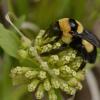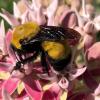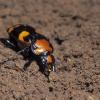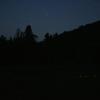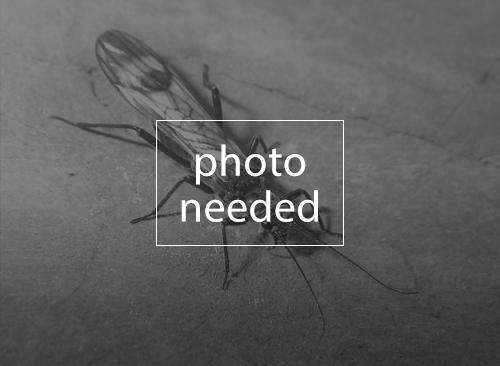
Hoplitis orthognathus has been recorded in only three locations but in a range of habitat types. It is endemic to a restricted geographic area and is potentially rare. Nothing is known of the biology of this species except that its flight period is June and July.
Taxonomic Status
Hoplitis (Proteriades) orthognathus (Griswold, 1983)
Nothing is known of the biology of this species. Records indicate that its flight period is June and July (Tepedino and Griswold, 1995). Tepedino and Griswold (1995) assumed that it nests in abandoned beetle burrows in dead wood. Marcot (2002) mentions it as being associated with down wood. Michener (2000) notes that nests of Proteriades have been found in the ground, in old beetle cells in a bank, and in holes in galls and stems. Cell partitions and nest closures were made of sand grains or pebbles and masticated plant parts. A few species used plant resins to hold sand. Michener also notes that Proteriades visit flowers of Cryptantha (family Boraginaceae). It has been recorded in a number of habitat types within the Columbia Basin, including Interior Ponderosa Pine, Idaho fescue/slender wheatgrass, and Ponderosa Pine-grassland.
Hoplitis orthognathus is endemic to the Columbia Basin, and has been recorded from three locations in Baker County, OR, Idaho County, ID, and Asotin County, WA.
Xerces Red List Status: Vulnerable
Other Rankings:
Canada – Species at Risk Act: N/A
Canada – provincial status: N/A
Mexico: N/A
USA – Endangered Species Act: N/A
USA – state status: N/A
NatureServe: N/A
IUCN Red List: N/A
Hoplitis orthognathus has been recorded in only three locations but in a range of habitat types. It is endemic to a restricted geographic area and is potentially rare.
Too little is known of this species to assess threats.
Conservation needs include including that suitable flowering plants persist and that appropriate nesting substrate remains. Since nothing is known of the biology of this species, studies of both the nesting and foraging habits would be valuable. Further surveys should be completed to confirm the distribution.
Marcot, B. G. 2002. An ecological functional basis for managing wood decay elements for wildlife. USDA Forest Service General Technical Report PSW-GTR-181. Available online (Accessed 2/15/05)
Michener, C.D. 2000. The Bees of the World. Baltimore, MD: Johns Hopkins University Press.
Tepedino, V.J., and T.L. Griswold. 1995. The bees of the Columbia Basin. Final report, USDA Forest Service, Portland, OR. 212 pp (Technical Report)
Citation
Shepherd, M. D. 2005. Species Profile: Hoplitis orthognathus. In Shepherd, M. D., D. M. Vaughan, and S. H. Black (Eds). Red List of Pollinator Insects of North America. CD-ROM Version 1 (May 2005). Portland, OR: The Xerces Society for Invertebrate Conservation.
Profile prepared by Matthew Shepherd, The Xerces Society for Invertebrate Conservation

